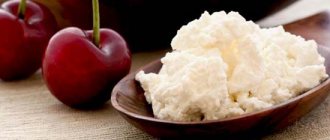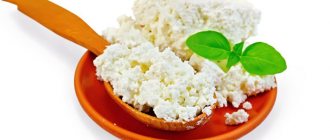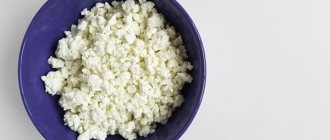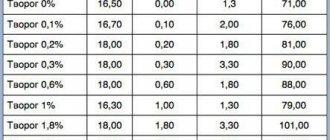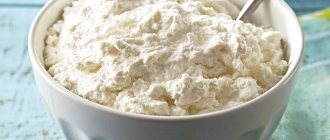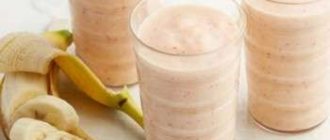Cottage cheese is a healthy fermented milk product. It is obtained by fermenting milk. There are several types of cottage cheese, which differ in the percentage of fat. It contains useful substances such as vitamins belonging to group B, calcium, phosphorus, potassium, magnesium, iron, carbohydrates, and proteins.
Women who watch their figure are often interested in: what to replace cottage cheese in the diet with? Worthy alternatives to this tasty product are low-fat kefir, Adyghe cheese, and tofu made from soybeans.
Delicious tofu as a replacement for cottage cheese during a diet
Cottage cheese is a healthy fermented milk product.
It is obtained by fermenting milk. There are several types of cottage cheese, which differ in the percentage of fat. It contains useful substances such as vitamins belonging to group B, calcium, phosphorus, potassium, magnesium, iron, carbohydrates, and proteins. Women who watch their figure are often interested in: what to replace cottage cheese in the diet with? Worthy alternatives to this tasty product are low-fat kefir, Adyghe cheese, and tofu made from soybeans.
Lean meat
From lean varieties of poultry meat, a person will receive the protein necessary for the body. Do not forget that useful elements are also found in fish.
Read also: Watch YouTube movies for free for very adults
If cottage cheese is not in the diet, then meat and fish dishes must always be there. Low-calorie recipes from such products are included in the diet for those who are struggling with excess weight.
It is important for a vegetarian to receive all the necessary vitamins and minerals for the full functioning of all internal organs and systems. Tofu is considered a low-calorie product, so those on a diet can replace cottage cheese with it. Regular consumption of bean curd helps eliminate toxins from the body.
This product has a beneficial effect on the heart and blood vessels. To add a piquant taste, you should add sauces and spices to taste to the tofu. This product can even be eaten in small quantities at night. Tofu is a real salvation for allergy sufferers and people diagnosed with diabetes.
Tofu as a replacement for ordinary cottage cheese on a diet
How can you replace cottage cheese on a diet? Representatives of the fair sex should pay attention to tofu. This healthy, low-calorie product is rich in amino acids. It contains vitamins, mineral compounds, and fatty acids.
The benefits and harms of the product for women on a diet
When consumed in moderation, tofu has a positive effect on the body:
- Due to its low calorie content, soy curd helps to reduce body weight while following a diet;
- The product accelerates the process of removing toxic substances from the body and has a beneficial effect on the cardiovascular system;
- Due to the high content of calcium salts, tofu helps strengthen the musculoskeletal system.
Bean curd allows you to avoid protein deficiency in the body while following a diet. Tofu is useful, first of all, for the fair sex who have been diagnosed with diabetes. It is recommended for consumption by women with an allergic reaction to lactose.
The product enhances sexual
attraction, prevents early skin aging. It alleviates the manifestations of premenstrual syndrome and improves the condition of the fair sex during menopause.
Women who are thinking about how to replace cottage cheese in their diet should also be aware of the potential harm of tofu. It contains phytic acid.
This substance slows down the process of absorption of minerals, reducing their positive effects on the body.
Tofu also contains isoflavones. Therefore, representatives of the fair sex with diseases of the endocrine system need to be careful when consuming soy curd while following a diet.
A simple recipe for preparing the product
Tofu, which can replace traditional cottage cheese, is prepared in various ways. You can make it from soy flour. The step-by-step recipe for preparing the product is quite simple:
- You need to pour a liter of cold water into a pan made of enamel;
- Add soy flour (approximately 1 cup) to the container;
- The resulting mass is thoroughly mixed;
- Slowly pour 0.4 liters of boiling water into the pan;
- Place the container on the gas stove and turn on medium heat;
- Cottage cheese is boiled for 20-30 minutes;
- After the specified time has passed, the pan is removed from the stove;
- Add 20 ml lemon juice to the container;
- The resulting mass is mixed and filtered through thick gauze, wrapped in several layers.
The finished cottage cheese has a soft, pleasant taste. It goes well with a variety of foods included in the diet menu.
Low-calorie cottage cheese casserole recipes
Classical
The oldest known recipe for such a dish is also called traditional. Preparing a casserole is not difficult, and you can bake it not only in a conventional oven, but also in a microwave or slow cooker.
Ingredients
- Dietary cottage cheese – 0.5 kilograms.
- Eggs – 2 pieces (you can only take yolks).
- Semolina - 2 tablespoons without top.
- Sugar (stevia, maple syrup, erythrol) – 2 tablespoons.
- Olive oil – 1 tablespoon.
- Vanillin - to taste.
Preparation
Grind the cottage cheese thoroughly until the grains are completely dispersed. Add eggs, sweetener, and semolina to the container, mix it all thoroughly. This can be done using a regular fork, a special food processor or mixer.
Place the resulting curd mass into a special greased pan (you can use a springform cake pan) and carefully level it with a spoon. For the microwave, you will have to take a heat-resistant glass form or a container made of special food-grade plastic. Place in the oven at 180°C. Bake until a nice crust forms, which will take 25-30 minutes. You can serve warm, with anything from diet cream to jam.
With apples
This recipe for diet cottage cheese casserole with apples is best suited for fruit lovers. In addition, its caloric content is significantly reduced due to the replacement of semolina with healthier oatmeal. The taste is amazing, the structure of the dough is delicate and crumbly.
Ingredients
- Low-fat cottage cheese – 0.5 kilograms.
- Hercules flakes (ground) – 3 heaped tablespoons.
- Green apple (preferably sour) – 1 piece.
- Eggs – 3 pieces.
- Natural yogurt – 100 grams (0.5 cups).
- Sugar or substitute - 2 tablespoons.
- Vanillin - to taste.
Preparation
Grind the cottage cheese until smooth, add yogurt, coarse oatmeal flour, sugar, vanillin, and egg yolks. Mix all this thoroughly to form a smooth, pleasant-to-touch dough.
Beat the egg whites with sugar until a stable foam forms. Peel and core the apple, grate it on a coarse grater, cut into thin strips or cubes. Mix all this, put it in a container with curd dough, mix again.
The baking pan can be lined with parchment or greased with butter. Place the dough obtained earlier into it and gently smooth it out with your fingers or a spoon. Preheat the oven to 180-220°C, place your casserole there, wait approximately 35-40 minutes. Serve with maple syrup.
With dried apricots and raisins
To make the dish beautiful, you can “paint” it bright orange. Dried apricots will help with this, and dried grapes will add a pleasant sweetness to the casserole. In addition, a lot has already been written and said about the benefits of these dried fruits, but first of all, dried apricots are valued for their high potassium content, which is beneficial for the heart muscle. There is no use of sugar or other sweeteners in this recipe.
Ingredients
- Low-fat cottage cheese – 0.4 kilograms.
- Dried apricots – 1 cup.
- Raisins (kishmish) – 0.5 cups.
- Semolina – 50-60 grams.
- Eggs – 1 piece.
- Sour cream or low-fat yogurt of medium thickness - 50 grams.
- Fat - for greasing the baking sheet.
- Salt, vanillin - to taste.
Preparation
Grind the cottage cheese again until the grains are completely destroyed. Pour boiling water over dried apricots and raisins in different containers, leave for 10-15 minutes to swell. After this, the raisins are simply drained, and the dried apricots are also chopped into small pieces with a knife. All this is added to the cottage cheese, and all the other components are thrown in there. The dough is thoroughly mixed.
Grease a baking tray or baking dish with fat (Ghee butter). Alternatively, you can sprinkle it with flour, crackers or line it with parchment paper. The dough is laid out in an even layer and baked for 20-25 minutes at a temperature of 170-180°C.
With banana and yogurt
This dietary cottage cheese casserole with banana and yogurt has one interesting feature - you will also need to add a pear, which was not originally included in the recipe. However, it will add special juiciness and richness of taste to your dish, so it’s worth using it.
Ingredients
- Low-fat cottage cheese – 0.3-0.4 kilograms.
- Banana – 1 piece.
- Pear – 1 piece.
- Egg – 1 piece.
- Natural yogurt – 250 milliliters (1 large glass).
Preparation
Mix the cottage cheese with a fork, blender or meat grinder until you obtain a smooth, homogeneous mass. Peel the banana, mash with a fork, and add to the dough. Send there an egg and yogurt, which is better to take Greek or make yourself. Peel the pear, cut the pulp into small strips or cubes, mix with the dough.
Preheat the oven to 170-180°C, grease the pan with butter or line it with parchment paper. Spread the curd dough in an even, thin layer. Bake for 25-35 minutes. You can check readiness as standard with a match - if the dough sticks to it. This means the dish is not ready yet.
How to compensate for calcium deficiency during a diet?
To avoid calcium deficiency when following a diet, you should eat the following foods:
- Broccoli;
- Dishes containing oatmeal;
- Almond;
- Sunflower seeds;
- Salmon.
In conclusion, it should be noted that women on a strict diet quite often replace cottage cheese with tofu. The product made from soybeans contains a large amount of vitamins. Tofu improves the strength of teeth and nails and gives hair a healthy shine.
Cottage cheese - an alternative for those on a diet
Cottage cheese is a fairly valuable source of a wide variety of microelements and amino acids that is in demand by individual systems of the body. A large amount of protein, vitamins and phosphorus, as well as calcium is a valuable property of this product. However, the features of a particular diet do not always support the consumption of this, even extremely valuable, type of food. There is a need to find the most effective replacement that would support the characteristics of cottage cheese.
If you are on a diet and you need to significantly reduce the content of proteins and carbohydrates in your diet, then it is quite possible to simply replace the standard types of cottage cheese with options with a reduced fat content.
This type of product usually contains no more than 130 kilocalories for every 100 g of its weight. In addition, there is also a huge number of other dairy products, which, when properly consumed, can quite effectively replace the lack of protein, microelements and easily digestible components.
By giving up cottage cheese, it is quite possible to supplement your diet with various kefir, yoghurts or matsoni cheese. The lack of protein can be compensated by using various dry varieties of lean meat in food.
If you have chosen the philosophy of vegetarianism and do not eat any products of animal origin at all, then it is quite possible to recommend using special tofu cheese . Your diet will not be poor in taste and aroma if you use a large number of additives, sauces and spices that will provide the most suitable and pleasant taste accompaniment for you. If we talk about proteins, then take care of a sufficient amount of plant analogues. Typically, the most popular foods in this context are buckwheat, legumes, nuts and couscous.
There are situations when children are simply allergic to the protein contained in cow's milk. In addition, do not forget about possible lactose intolerance, when you cannot consume dairy products. Of course, in this case you will need to find a reliable and effective source of calcium that will replenish the need for this macronutrient.
Soybeans, as well as kale, oatmeal and salmon, can be effective substitutes. When properly prepared, sunflower seeds can also provide a wide range of micro- and macroelements. For adults, it may be advisable to use more almonds.
If a child has an allergy to cow's milk protein, do not forget that it may not apply to goat's milk products. If your baby tolerates goat milk and cottage cheese well, use them to supplement the correct diet.
If intolerance extends to various types of protein, then it is quite possible to recommend the use of the already mentioned tofu cheese, which in its appearance, taste, and consistency is not much different from traditional types of cheeses; the abundance of possible additives, subject to proper selection, will make the baby’s diet the most complete and rich in nutrition. microelements and protein content.
Main conclusions
The benefits of cottage cheese are undeniable. However, this product cannot always be left in the diet of someone losing weight:
- Cottage cheese is contraindicated for people with lactose intolerance, kidney disease and those adhering to a vegan system.
- Cottage cheese is most often replaced with soft cheeses, kefir, fermented baked milk and other fermented milk products, as well as a plant-based alternative - tofu.
- Cottage cheese substitutes are used in the preparation of soups, hot dishes, salads, baked goods and desserts.
- You can make up for the lack of calcium with fish, beans, fruits, nuts, herbs and bran.
Even if it is impossible to eat cottage cheese, you can always choose a safe and tasty alternative with a suitable composition and beneficial properties.
How to replace cottage cheese in your diet

Cottage cheese is perhaps the main source of protein for most people watching their figure. Cottage cheese is convenient. I took it out of the refrigerator, opened the pack and it was ready. At most, add a handful of tasty additives. Cottage cheese is a good source of calcium, phosphorus and selenium. Cottage cheese gives satiety, is easily digestible and is quite suitable for consumption at night. You quickly get used to this kind of food. However, sometimes we leave our home country and inevitably face the need to replace some products in our usual diet. Let's see what to do in such a situation.
There are no problems in Europe or America. The store always has low-fat or low-fat cottage cheese, Greek yogurt or quark (soft, semi-liquid cottage cheese). By the way, some types of yogurt contain more protein and calcium than cottage cheese.
It is worth looking for low-fat or low-fat cheeses in the supermarket. There are very tasty varieties of hard or processed cheese, as well as Camembert, ricotta and others. These cheeses are a great substitute for cottage cheese for breakfast or as a nighttime meal. ot;created_timestamp":"0″,"copyright":"","focal_length":"0","iso":"0","shutter_speed":"0″,"title":"","orientation" :»0″>» data-image-title=»Low-fat camembert - a great snack for the night» data-image-description=»» data-medium-file=»https://i2.wp.com/zdorovajamama.com/ wp-content/uploads/2015/09/Nezhirnyiy-kamember-olichnyiy-perekus-na-noch.jpg?fit=300%2C200&ssl=1″ data-large-file=”https://i2.wp.com/zdorovajamama .com/wp-content/uploads/2015/09/Nezhirnyiy-kamember-olichnyiy-perekus-na-noch.jpg?fit=530%2C353&ssl=1″ data-flat-attr=”img” class=”aligncenter” src =”https://pohudenie.site/wp-content/uploads/5b7a991fb60f15b7a991fb6131.jpg” alt=”Low-fat camembert is a great snack for the night” width=”530″ height=”353″ data-recalc-dims=”1″ />
Try replacing cottage cheese with low-fat Camembert
There are also traditionally low-fat cheeses. In Cyprus - anari (15% fat content), in Italy - ricotta (13% fat content). Austrian cheese. Of course, their fat content is much higher than that of low-fat cottage cheese, however, this option is worthy of consideration.
In southern and southeastern countries, difficulties may arise. In the article “Protein Sources,” we found that fish, lean poultry, and seafood are excellent sources of high-quality protein with a calorie content of 100 to 150 kcal per 100 grams. Of course, this is a little more than cottage cheese, but on the other hand, this food carries additional nutrients that are simply not present in cottage cheese. Plus, it has a new, often more intense taste. All this means that the new food will be satisfying and healthy for your figure. Just adjust the portion size and everything will be fine.
For a late night meal, a piece of fish or lean poultry accompanied by plenty of vegetables is perfect. Such food is well digested and helps you sleep better.
Plant-based protein products should not be overlooked either. Soybeans, tofu, asparagus, bok choy, chard, peas, beans and others. Do not be surprised. Leafy vegetables can be a good source of protein as well as calcium. So, about 200 grams of spinach will give about 11 grams of protein and a quarter of the daily calcium requirement. A pleasant bonus will be the fact that the abundance of greens in the diet allows you to automatically balance the intake of essential fatty acids, and it is also safe to eat even at night.
Cottage cheese will never be able to give such an effect. Another thing is that cottage cheese contains all the amino acids necessary for humans, but greens do not. This is where soy, eggs, fish and grilled meat come to the rescue (don't forget to remove the skin!). Similar food is found in almost every country in the world.
Although egg white contains neither calcium nor phosphorus, it is not inferior to cottage cheese in amino acid composition, and also contains more selenium and potassium. It is quite capable of replacing the usual portion of fermented milk product.

In general, when going on a short trip, it is worth relaxing a little and trying the local food. Don’t get carried away with overtly fatty and sugary-sweet dishes, but give it a try. This will allow you to fully enjoy the atmosphere of an unfamiliar country, and any remaining doubts can be compensated for by extensive walking excursions.
Thanks for sharing the article on social media. Everything is dear to you!
Sincerely, Elena Dyachenko
Your personal consultant in matters of slimness
What can you replace cottage cheese with?
Cottage cheese is a fermented milk product that is prepared by fermenting milk with the subsequent extraction of whey. You can make very tasty okroshka from the whey.
There are several types of cottage cheese, and they are classified according to the percentage of fat content in it: fat (19-23% fat), classic (4-18%), low-fat (1.8%), low-fat. The composition of cottage cheese includes vitamins of groups A, B1, B2, PP, C, E, B12, β-carotene, acids, copper, zinc, fluorine, iron, magnesium, sodium, calcium, phosphorus, ash, carbohydrates, fats, proteins, water.
Using cottage cheese to prepare such popular dishes as cottage cheese pancakes, cottage cheese donuts, cottage cheese cake, cottage cheese casserole and so on.
What can you replace cottage cheese with?
– if you are watching your figure and don’t want to gain extra pounds, then you can replace fatty cottage cheese with low-fat cottage cheese (
dietary cottage cheese
). Dietary cottage cheese contains almost all useful components for the body, with the exception of fluorine, zinc, copper, folic acid, vitamins B12 and E. The nutritional value of 100 grams of the product is 170 kcal. You can use dietary cottage cheese in preparing a variety of sweet and savory baked goods, for making desserts, and so on.
Artificial cottage cheese - how it is made. Fake cottage cheese
→
Russians have long been unaccustomed to the meager assortment in grocery stores; now supermarkets have everything they want and what they don’t want either. For example, counterfeit dairy products. The St. Petersburg consumer society “Public Control” conducted an examination of the quality of cottage cheese, and the results were simply stunning. Experts purchased ten samples of fermented milk products and examined them in a food laboratory. Almost none of the samples complied with GOST; instead of cottage cheese, customers were offered a dubious consistency made from palm and coconut oil. These oils are whipped into a thick white foam, thickeners, flavorings, and flavoring agents are added, and the “curd” is ready. But only a dairy product that is made from 100% milk fat, and not vegetable fat, has the right to be called cottage cheese.
To the horror of experts, in some samples no milk fat was found at all, and the fat phase was replaced with fats from palm and coconut oils. Therefore, in counterfeit cottage cheese, the proportion of protein is much lower than in a natural fermented milk product - according to GOST, cottage cheese should contain at least 16% protein, but in reality it is only about 9%. But there is plenty of fat in fake cottage cheese - twice as much as it should be. Those who care about their figure and health should not use this product.
As for the taste of store-bought cottage cheese, it is very different from natural village cottage cheese, and anyone who has had the chance to compare them will immediately feel the difference. No matter how many flavorings and flavoring additives are added to the palm-coconut mixture, the organoleptic indicators are more than average, and the taste is not quite curd, but rather effervescent, with sourness and a strange aftertaste for fermented milk products.
Of course, not every manufacturer cheats so blatantly; sometimes milk fat is still present in cottage cheese in insignificant quantities. This is of little use or benefit - in such products the mass fraction of protein is very low, and the proportion of moisture, on the contrary, is off the charts.
Why do manufacturers add plant components to dairy products? Everything is very simple. There is practically no dairy cow herd left in the country, as a result of which natural milk is very expensive. In an attempt to reduce the cost of cottage cheese, dairies add cheap palm and coconut oil to milk. At first, the amount of the herbal supplement was insignificant, and then its volume increased and reached a critical value.
Of course, for the manufacturer, palm oil is a real boon: it is cheap, it can be added to many products (condensed milk, chocolate, cookies, candies, cakes, potato chips, crackers). Also, do not forget that coconut oil contains a lot of saturated fats, which have the property of extending the shelf life of the product.
But in addition to its advantages, vegetable oil also has disadvantages - it increases cholesterol levels, causes atherosclerosis, vascular thrombosis, cardiovascular diseases, and obesity. Therefore, cottage cheese with palm oil is not such a healthy thing at all; it does not contain protein valuable for the human body, beneficial lactic acid bacteria and milk fat. It is especially not recommended to give fake cottage cheese to children - their growing body needs curd protein, and not fat.
Cottage cheese is a super healthy product, it contains a lot of healthy protein and almost no carbohydrates. There is not even lactose, which makes many people intolerant to milk. Cottage cheese is very useful for such “eaters”. Most of the most important proteins are in the so-called. "Tvoroge-DM". It is obtained using ultrafiltration, due to which much more of the most beneficial proteins remain in the product, which are usually lost along with the whey. Traditionally, we were taught that the lower the fat content of cottage cheese, the healthier it is. Not long ago, special fatty acids (CFA) were discovered in milk fat. They prevent the development of obesity, diabetes, certain types of cancer and even protect the heart and blood vessels.
Quite recently, manufacturers, chasing profit, almost destroyed cottage cheese, trying to reduce the cost of its preparation technology as much as possible. A lot of such fakes are still sold. Some of them have become legal: now they are officially called “curd product” (usually this inscription is applied small and somewhere on the side or back). This “product” always contains vegetable fats. Honestly? Yes! But... Many manufacturers sell some of their products legally as a curd product, and some as cottage cheese. More than once I specifically bought cottage cheese for testing. As a rule, there were no differences between them. Therefore, I stopped taking cottage cheese if its manufacturer also produces a cottage cheese product. It is very profitable to produce a fake - vegetable fats significantly reduce the cost.
A particularly criminal topic is farm cottage cheese: it is sold by weight without a factory label. Often it turns out to be the cheapest curd product. Many people buy this kind of cottage cheese, thinking that it is cheap because it goes past resellers - straight from the farmer. In fact, such producers usually do not have not only a farm, but also a house in the village. And they make their “cottage cheese” often in violation of all technologies.
The pseudo-farm product can also be found in large stores - as a rule, it is sold in discreet packaging, on which only the price is indicated.
But let's get away from these marginal products and take a closer look at real cottage cheese. Moreover, he is one in many faces. Many are sure that it is made from milk and sourdough (this is exactly how our parents made it at home). But today cottage cheese is made not only from milk and not only from milk powder, but also from a milk construct: this is the so-called. recombined milk made from skim milk powder, cream, butterfat, whey and other milk components (all of which can be found on the product label). It is clear that it is a pity to introduce expensive milk fat into it, and many “combine” it with vegetable fat. The best choice is cottage cheese made from whole milk with natural fat content. Since the fat content in such milk varies, the fat content of the cottage cheese can also vary.
Bacterial starters are required in curd making, but calcium chloride (E509) and enzymes are added to them in order to speed up the formation of a protein clot. Calcium makes the taste of cottage cheese poorer, and enzymes - richer, especially if they are rennet - from the stomach of ruminants. It is easy to find out whether they were used or not: these components are always indicated in the composition of the product. Good cottage cheese should not contain preservatives, and today even expensive products contain them. Sorbates (E201-203) are most often used. These are the most harmless preservatives, but without them the cottage cheese is more natural.
How to avoid becoming a victim of deception
What is modern milk made from? Ten years ago, such a question could at best make others smile. Today, when consumers find themselves face to face with unscrupulous producers, there is no irony in it. Dairies and small private owners have learned to make cottage cheese, butter, cheese and even cow's milk from cheap vegetable oils and fats, masking the true taste and benefits of the product under a “thick layer” of flavors, dyes and other additives. In numerous reports from Rospotrebnadzor and the police fighting against counterfeit milk, you can find messages that talk about industries that manage to produce butter and cottage cheese without milk at all. It is very difficult for the average buyer to distinguish what is on the shelf in the store - high-quality cottage cheese or a cheap counterfeit (a product consisting of plant raw materials, but sold under the guise and at prices of natural ones). We asked Perm residents how often they encounter counterfeit products in our stores.
Blitz survey
Victoria Ivleva, 21 years old:
“I haven’t seen it myself, but my mother recently bought this kind of cottage cheese.” At first, when we opened it, we couldn’t take it out of the package for a long time, it stuck to both the container and the spoon, and when we finally got it out, it turned out that it was stuck together, smelled strongly of vegetable oil and had some kind of bitter taste. taste. We were afraid to eat such cottage cheese and threw it away. Mom was very upset because she wanted to make cottage cheese cookies.
Ivan Sarnaev, 23 years old:
“I deal with this all the time.” I play sports and spend a lot of time in the gym. To keep myself fit and healthy, I eat a pack of low-fat cottage cheese for breakfast every day. It happens that you eat such cottage cheese and realize that it is made from some kind of oil or fat. Imagine, low-fat cottage cheese made from fat! I took it back to the store a couple of times and got my money back, more often I just throw it away. Now I try to buy cottage cheese from only one manufacturer, which does not counterfeit it yet.
Boris Ivshin, 41 years old:
“I used to be sure that the quality of a product is largely determined by its price, but it turned out that even expensive products are counterfeited. We recently bought a pack of cottage cheese, which cost about 200 rubles, but inside we didn’t find anything similar to the usual cottage cheese, it stuck together, smelled unpleasantly of something musty, and there was still a lot of time before the expiration date indicated on the package .
Raisa Gavshina, 72 years old:
“Now it has become very difficult to go to the store, there are so many bright packages, and the letters on them are very small. I always have to ask someone to check the expiration date of the milk or kefir that I buy every day. And I try to take cottage cheese only in transparent cups, so that it can be seen that it is crumbly inside, as it should be, and not in lumps. Prices for food are constantly rising, but the quality is such that it has to be thrown in the trash. This should not be in stores, it needs to be monitored very strictly, because these are food products, and someone could get poisoned.
Viktor Volkov, 59 years old:
— I bought it a couple of times. I bought a pack of cottage cheese, brought it home, opened it and dumped it on a plate. I wanted to stir it with sour cream, but it turned out that it was all stuck together, did not mix at all, and stuck to the plate. I thought it was because I bought the cottage cheese in a closed package. The next time I took cottage cheese from a different manufacturer and cheaper, but in a bag. It looked crumbly, but it turned out to have some kind of musty smell and taste of sunflower oil, apparently it was added there. Now I go to another store to buy milk, and so far everything is fine.
Life on a palm tree
Palm trees, from which oil is extracted, grow in Indonesia and Malaysia. These countries are the main suppliers of vegetable fat in the world. In 2012, our country officially purchased more than half a million tons of palm oil; according to experts, almost the same amount entered the country illegally. If the technology for extracting and producing palm oil has been violated, it becomes very dangerous to health. The fact is that the melting point of such oil is higher than that of the same butter - approximately 35-39 degrees Celsius. That is, when it enters the human body, this oil does not melt completely, but remains in some quantity in the stomach. Considering that palm vegetable oil contains stearin, which is used to make household candles, and cholesterol, as in animal fat, the “benefits” that products based on such raw materials bring us become obvious. Due to the harmful effects of palm oil on the human body, the World Health Association (WHO) back in 2005 recommended that manufacturers limit the use of palm oil to reduce the risks of heart disease. However, apparently, manufacturers are more concerned about our wallets than our health.
Miracles of chemistry and no witchcraft
The production of dairy products, if produced according to GOST, is not a very profitable business. For example, one kilogram of butter during its production requires up to 25-30 kilograms of milk; it’s another matter if you add cheap vegetable fat, preservatives and flavorings to the butter or cottage cheese. The cost of an artificial product will be much lower than that of a natural one, and its shelf life, on the contrary, will be longer. To make fake cottage cheese, the manufacturer whips vegetable oil to a thick white foam, adds thickeners, flavors, and other additives to it and packages it. It is this kind of vegetable cottage cheese that turns into one thick mass in a package, which is then difficult to remove from the package and stir.
If you wrap such “chemistry” in a beautiful package and advertise it correctly, you can make good money. By law, only a product that contains nothing but milk and sourdough can be considered cottage cheese. If on a store shelf you see a pack on which instead of “Cottage cheese” it says “Curd”, “ Light cottage cheese”
"and the like, most likely, this is a fake. The manufacturer, of course, must indicate on the pack what he made such a “Curd” from, but often this information is either not on the pack at all, or it is written in too small a font. You can protect yourself from purchasing a product that does not comply with regulatory documents by remembering a few simple rules.
Consumer experiment
Real cottage cheese can only be white; any deviation from this norm, a yellowish or bright yellow color of the product indicates that it contains vegetable fats. If the manufacturer indicated something other than milk and sourdough in the composition of cottage cheese, it is not cottage cheese, but a curd product. In most cases, fake cottage cheese has a rancid smell of sunflower oil; such cottage cheese tastes very sour or, conversely, bitter. Counterfeit cottage cheese made from vegetable fat can leave an unpleasant “greasy” trace in the mouth, which can be felt on the palate for a long time. Some manufacturers add water to it, which is then mixed with starch. You can check whether your purchase contains starch at home by dropping a little iodine into a spoon with cottage cheese. If, when mixing cottage cheese with iodine, the dairy product turns blue, it means that the manufacturer diluted it with starch. Not the least role in choosing cottage cheese in a store or on the market is played by its price. Products made from natural milk simply cannot be cheap. If a manufacturer, under the same conditions (the same fat content of cottage cheese, its weight and composition), sells its product cheaper than the rest of the cottage cheese in the store, there is reason to think.
Dangerous product
Fake cottage cheese is very dangerous for the body: the vegetable oil that is added to it increases cholesterol levels in the body and can cause atherosclerosis, vascular thrombosis, obesity and heart disease. In young children, whose body needs natural curd protein, counterfeit can cause severe allergies. There is nothing useful or valuable for the body in “cottage cheese” made from palm fat; this set of chemical elements is valuable only for a careless manufacturer. The only way to stop people who profit from us and our children every day by selling counterfeit products is to deprive them of markets. To do this, you need to try, as they say, the whole world to write complaints to the department of Rospotrebnadzor in the Perm Territory, contact organizations for the protection of consumer rights, and, in the end, stop buying cheap counterfeit cottage cheese.
A simple way to identify fake cottage cheese
Real cottage cheese should be crumbly and uniform white in color. If you taste fat, this means the product was made without dairy, from Indonesian palm fat. To check whether the manufacturer mixed the cottage cheese with starch and water, you need to drop iodine onto a small amount of cottage cheese and stir until smooth; if it turns blue, there is starch in the cottage cheese.
Cottage cheese is considered a healthy and dietary product, however, unfortunately, counterfeits are not uncommon in markets and stores.
, the benefits of which are not worth talking about. Most often, of course, loose cottage cheese is faked, since it is the easiest. But, as our small research has shown, a packaged product, where the composition is indicated on the packaging, also often turns out to be not what it claims to be!
So, we bought two types of cottage cheese - by weight (180 rubles per kilogram) and in plastic packaging, the price is almost 2 times higher. The label of the second product indicated its composition: normalized milk, lactic acid bacteria. Everything seems to be as it should be?
We take both samples out of the bags and containers and carefully examine and smell them (we are not a laboratory, at home we cannot conduct serious research using various equipment and chemicals, so we focus on organoleptics and common sense).
To avoid confusion in the future, we place coins near the piles of “cottage cheese”. However, as it turned out later, the products are completely identical, so such “notes” turned out to be superfluous!
Before drawing conclusions, we studied open data about what conclusions real experts who studied samples of “fermented milk” came to in serious laboratories. Imagine: out of ten samples, not one met GOST! Some samples had no milk fat at all
– therefore, the products did not have the right to be called cottage cheese and curd mass. What was passed off as cottage cheese? A mixture of palm and coconut oils. Accordingly, the expected protein in the counterfeit product is half as much as needed, but the fat, on the contrary, is twice as much! Such a product certainly cannot be called dietary, and the dubious benefits of vegetable oils are also worth thinking about. Not to mention the fact that such counterfeits are a direct deception of consumers, who should know what exactly they are buying.
The cottage cheese looks and smells, in general, like the real thing. But is he really an honest cottage cheese?
Let's return to our “rams”. In appearance, taste, consistency, color, grain size, smell and other characteristics, both of our samples seem identical. Maybe they are both natural cottage cheese? Or is the fake so good that it looks exactly the same as the real product?
Leave the samples in a warm place. Homemade cottage cheese, forgotten in a plastic bag somewhere on the table, after a couple of days begins to taste bitter and “fragrant” of rancidity and sourness. It becomes slimy and turns yellow (when exposed to air). Our samples have stood the test of time with “honor.” Neither after three days nor after a week the smell changed. The “cottage cheese” has dried out a little, and it looks like vegetable oil is oozing out of it. When you rub grains, your fingers become very greasy. The samples are still the same white, do not stick together, do not darken, and do not smell rancid or sour.
Samples of “wrong cottage cheese” (above) and a natural product (below, circled in green) – feel the difference!
While our exhibits were “lying” in the warmth, we bought another sample - this time definitely natural cottage cheese, which we purchased with some risk on the market from a private seller. At a price of 300 rubles per kilogram. Pay attention to the photo above. Here our cottage cheese lies next to half-dried piles of counterfeit cheese. Just a couple of days later, the real curd was covered with a hard yellow crust, dried out, “shrinked,” and acquired a not very pleasant smell.
As for taste and consistency. Counterfeit can be identified by its fine grain and uniformity. As a rule, it does not form lumps, crumbles or falls apart into small fractions. On the tongue they feel like small grains of butter, gradually dissolving. Thus, oddly enough, fake cottage cheese tastes better than the real thing (this is for those who can eat natural cottage cheese “without anything” - without sugar, sour cream and other additives).
So, what conclusions can you come to after this experiment? Firstly, cheap cottage cheese is definitely a fake
. A quality product cannot be cheap. Secondly, unfortunately, even labeled packaging does nothing to protect us as consumers. Thirdly, it is better, no matter how trivial it may sound, to buy lactic acid products in trusted places and from well-known manufacturers.
But what about the benefits of vegetable oil, which nutritionists so often told us about? Everything is simple here. Palm oils are very “useful” for product manufacturers – because they are cheap, first of all. And the ability to create ice cream, cottage cheese, pseudo-dairy products, cookies, cakes, etc. at lower costs. For us, who want to eat healthy food, such an amount of vegetable fats is absolutely useless. Especially when the manufacturer does not leave us a choice and does not honestly write what exactly is contained in the “cottage cheese” container.
Chemical diet: principles, menu, reviews and results
The chemical diet was founded by Professor Osama Hamdiy. This system is popularly known as the “egg diet.”
There is no need to be scared by the name; no chemicals are used. It is based on strict adherence to the basic principles of nutrition, which allows you to adjust the chemical processes in the body, which leads to the burning of fat layers.

Its effectiveness is high; in a month you can lose from 10 to 30 kilograms.
Benefits of a chemical diet
This diet is classified as strict, but it has a number of advantages:
- The weight loss effect is achieved by adjusting the diet. At the same time, it is not the calorie content of the dishes that is reduced, but the consumption of fast carbohydrates. Protein-containing products are introduced into the menu. The body does not receive energy from carbohydrates, and therefore fat accumulation begins to be consumed.
- The amount of protein in the body does not change, so weight loss is carried out precisely due to fat deposits. Muscle mass does not suffer, sagging and stretch marks do not occur.
- Eating protein promotes a long-lasting feeling of fullness. There is a decrease in cravings for eating sweets, and it becomes easier to control appetite. This is an excellent option for overweight people with diabetes.
- This diet option is affordable and the food is inexpensive.
Nutrition rules
Strict adherence to basic nutritional principles is required for four weeks. This guarantees maximum effect.
- The diet is based on soft-boiled eggs. They eat them every day.
- It is imperative to follow the menu requirements; no replacement of some products with others of similar nutritional value is acceptable.
- You cannot swap days and weeks, increase or decrease portions if they are directly indicated on the menu. When such recommendations are not available, you can eat until hunger passes.
- If even one day is broken, you will have to start over the entire system from the first day.
- If there are products that a person does not accept in principle, they are simply excluded without any replacement.
- Allowed products can be consumed as much as required, unless there are other rules.
- A snack after a meal should be no earlier than two hours later.
- Compliance with the drinking regime: the amount of water you drink increases to 2 liters per day. Drinks you can drink include pure water, natural coffee, and tea.
- You may feel very hungry at first. In this case, you can snack on vegetables (carrots, tomatoes, cucumbers).
- Sports training is not necessary, but physical activity is necessary.
- To fully monitor your diet, you need to weigh yourself regularly. This is done in the morning, before meals. In the first days there is a restructuring of the body, getting used to the new nutrition system. Therefore, it is considered normal if the weight stays the same.
- eggs;
- legumes;
- vegetables in any form;
- apples, plums, citrus and kiwi, watermelon;
- natural seasonings (salt and pepper);
- greens (garlic and onion).
You need to select a menu only from the list of acceptable products:
Products prohibited during the diet:
- potato;
- fatty meat, especially lamb;
- figs, bananas, dates, grapes;
- natural fats, oils, sausages and canned food;
- sugar.
Sample menu
Each week of this meal is strictly scheduled. It is worth remembering that this plan should be strictly adhered to.

Every day for breakfast, eat half a fruit (citrus fruit) and 1-2 soft-boiled eggs!
Benefits and composition
Dairy products are among the leaders among ingredients containing calcium. At the same time, cottage cheese confidently takes first place. It’s not for nothing that parents so often convince their picky children to eat a portion for breakfast, hiding it under a layer of jam or honey.

Cottage cheese affects the formation of teeth and bones. In addition, it contains substances that have a positive effect on the process of gaining muscle mass in athletes. And phosphorus is extremely necessary for women during pregnancy.
But, if its daily use only causes you unpleasant emotions, you should think about what you can replace cottage cheese with.
In addition to a huge amount of useful microelements, cottage cheese also has a fairly high percentage of fat content per 100 g of product. If you are in the process of getting rid of unwanted pounds, then you should think about what you can replace cottage cheese in your diet with.

Regular consumption of low-fat cheeses, kefir or yoghurt can help compensate for calcium deficiency, and dietary meats can serve as a source of protein.
Also on store shelves today there is a huge variety of types of cottage cheese, where the fat content is almost zero, but all the beneficial properties are preserved.
There are, of course, other products that contain calcium to varying degrees. These include: salmon, oatmeal, broccoli and even almonds. Thus, a properly designed diet will help you lose extra pounds without depriving your body of the substances necessary to maintain health.
Calorie content
Cottage cheese casserole is considered a taste from childhood. Kids love this treat. It is easily digestible, suitable for people of any age and for people with gastrointestinal pathologies who are forced to adhere to therapeutic diets. Nutritionists prefer the cooking option without flour and semolina. This approach significantly reduces the calorie content of the finished dish, making it dietary. But the benefits are completely preserved. Casserole with cottage cheese and fruit contains even more useful ingredients.
For 100 g of a finished dish with semolina or flour there is no more than 230 - 250 kcal. By excluding these products, the calorie content of the cottage cheese casserole is further reduced.
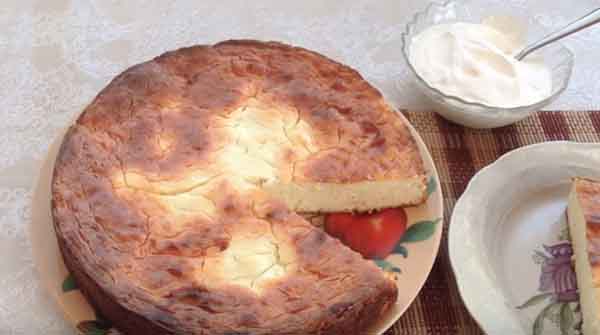
Pregnancy
As soon as a woman finds out that she is pregnant, the first thing she does is see a doctor who will monitor her for the entire 9 months. And the doctor, in turn, must give all the necessary advice, including on changing the diet of the expectant mother. Thus, calcium entering the body will affect not only the strength of a woman’s bones, but also the formation of the fetal skeleton. Therefore, cottage cheese should appear on your menu with enviable regularity.

It is no secret that a woman in this position may be more picky and picky. And if you are faced with a similar situation, then you should understand how to replace cottage cheese during pregnancy.
Vegetarianism
Those who have decided to give up all animal products sometimes have a difficult time. I want to eat a warm omelette with cheese for breakfast or homemade, flavorful cheesecakes. How to replace cottage cheese and other dairy products in such a situation?
The most popular alternative is tofu cheese. It is considered one of the most nutritious protein foods among vegetarians. Cheese is made from soy milk, which curdles after heat treatment. This versatile product is used both as a main dish and as an ingredient for desserts or salads. It can be fried, deep-fried and even pickled.
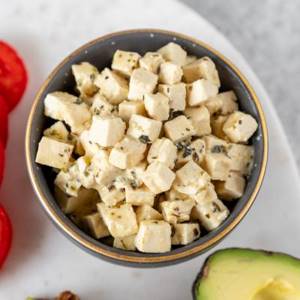
You might also want to look into products that are similar to cream cheese but made from different types of nuts, such as cashews or almonds.
There is also such a fairly common problem as lactose intolerance. This is a disease that is inherent in the body at the genetic level and, unfortunately, cannot be treated.
Today there is a huge selection of lactose-free dairy products. From milk formulas to yoghurts and kefir. All of them usually have a corresponding sticker on the package, which means finding them on the shelf will not be difficult.
That’s why in the modern world, if you are allergic to lactose, you don’t need to immediately think about what to replace cottage cheese with. You can simply choose the manufacturer that suits you and enjoy your favorite product.
Plant-based alternative
Veganism is the strictest form of vegetarianism, implying the rejection of any animal products, including cheeses, cottage cheese and fermented milk derivatives.
The most famous plant-based alternative to cottage cheese is tofu. This product is especially popular in Asian cuisine.
Tofu is made from soy milk and contains no animal ingredients. There are several types of tofu:
- classic (solid);
- pressed;
- smoked;
- dried;
- silk.
Tofu, at its core, is a soy cheese with a high content of vegetable protein and calcium. It also contains B vitamins, ascorbic acid and micronutrients such as iron, phosphorus and zinc. The calorie content of the product is only 76 kcal.
Tofu has a neutral taste, so it is often used as an additional ingredient for soups, hot dishes and desserts. It can be fried, stewed, baked, boiled, smoked and, of course, eaten fresh.
For vegetarians, tofu is an alternative to meat; for everyone else, low-calorie options for cottage cheese or cottage cheese. However, despite this, nutritionists do not recommend abusing this product. The maximum permissible daily intake, according to most doctors, is 100 grams.
Important! Pediatricians do not recommend including tofu in the diet of children.
Curd surprise
Perhaps you or your family do not adhere to diets, do not suffer from allergies, but simply do not like the taste of cottage cheese. And that’s why he’s a rare guest on the home menu. This can be corrected by preparing an unusual recipe, where the cottage cheese will be simply unrecognizable. An excellent example of such a dish is brownie with cherries and cottage cheese. For preparation you will need:
- butter - 120 g;
- granulated sugar - 150 g;
- flour - 150 g;
- baking powder - 1 tsp;
- soft cottage cheese - 300 g;
- vanilla sugar - 10 g;
- chicken eggs - 4 pcs.;
- pitted cherries - 350–400 g;
- dark chocolate - 100 g;
- a pinch of salt.
First you need to beat 2 eggs with 50 g of regular sugar, a bag of vanilla and a pinch of salt. Beat the remaining eggs and sugar with cottage cheese until a homogeneous air mass is obtained. In the bowl containing the vanilla sugar, add the chocolate, previously melted in a water bath, and baking powder. We send the flour there and beat everything together.
Place chocolate dough in layers in a baking dish, then curd cream and cherries. This amount of product should be enough for 3 layers. The pie is baked for 40–45 minutes at 180 °C.
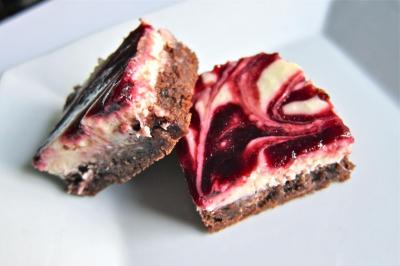
Now you know how to replace cottage cheese in your diet and baking. And your body will definitely not suffer from a lack of calcium, which it needs so much.
What is starch used for?
Starch is a special type of polysaccharide found in most green plants.
Due to its ability to absorb water molecules in cooking, this substance is used as a universal thickener and stabilizer. It is produced from rice, peas, potatoes, corn, barley, wheat, sweet potato, water chestnut and many other crops. Most often you can find potato and corn starch in Russian stores. They are slightly different due to the structure of the granules. Potato starch is more viscous, but loses its properties over time, and corn starch makes dishes cloudy, but does not give a specific taste. For this reason, the second one is often added to delicate creams and desserts. But in most cases the products are interchangeable. Instead of 1 part potato starch, use 1½–2 parts corn starch.
Starch is available in every store. But if you're on a low-carb diet, have allergies, don't like the flavor or texture of foods made with this product, or simply don't have the starch at home, it's easy to substitute.
Delicious tofu as a replacement for cottage cheese during a diet
Cottage cheese is a healthy fermented milk product. It is obtained by fermenting milk. There are several types of cottage cheese, which differ in the percentage of fat. It contains useful substances such as vitamins belonging to group B, calcium, phosphorus, potassium, magnesium, iron, carbohydrates, and proteins.
Women who watch their figure are often interested in: what to replace cottage cheese in the diet with? Worthy alternatives to this tasty product are low-fat kefir, Adyghe cheese, and tofu made from soybeans.
Tofu as a replacement for ordinary cottage cheese on a diet
How can you replace cottage cheese on a diet? Representatives of the fair sex should pay attention to tofu. This healthy, low-calorie product is rich in amino acids. It contains vitamins, mineral compounds, and fatty acids.
The benefits and harms of the product for women on a diet
When consumed in moderation, tofu has a positive effect on the body:
- Due to its low calorie content, soy curd helps to reduce body weight while following a diet;
- The product accelerates the process of removing toxic substances from the body and has a beneficial effect on the cardiovascular system;
- Due to the high content of calcium salts, tofu helps strengthen the musculoskeletal system.
Bean curd allows you to avoid protein deficiency in the body while following a diet. Tofu is useful, first of all, for the fair sex who have been diagnosed with diabetes. It is recommended for consumption by women with an allergic reaction to lactose.
The product enhances sexual
attraction, prevents early skin aging. It alleviates the manifestations of premenstrual syndrome and improves the condition of the fair sex during menopause.
Women who are thinking about how to replace cottage cheese in their diet should also be aware of the potential harm of tofu. It contains phytic acid.
This substance slows down the process of absorption of minerals, reducing their positive effects on the body.
Tofu also contains isoflavones. Therefore, representatives of the fair sex with diseases of the endocrine system need to be careful when consuming soy curd while following a diet.
A simple recipe for preparing the product
Tofu, which can replace traditional cottage cheese, is prepared in various ways. You can make it from soy flour. The step-by-step recipe for preparing the product is quite simple:
- You need to pour a liter of cold water into a pan made of enamel;
- Add soy flour (approximately 1 cup) to the container;
- The resulting mass is thoroughly mixed;
- Slowly pour 0.4 liters of boiling water into the pan;
- Place the container on the gas stove and turn on medium heat;
- Cottage cheese is boiled for 20-30 minutes;
- After the specified time has passed, the pan is removed from the stove;
- Add 20 ml lemon juice to the container;
- The resulting mass is mixed and filtered through thick gauze, wrapped in several layers.
The finished cottage cheese has a soft, pleasant taste. It goes well with a variety of foods included in the diet menu.
Cooking secrets
The dish will be equally tasty when baked in the oven, in a slow cooker or in a double boiler. The basis of the dessert will always be cottage cheese, which should be as fresh as possible; it is forbidden to cook spoiled cottage cheese. You can cook from expired cottage cheese, but provided that the product was stored in the refrigerator, has a normal color and there is no unpleasant odor. To improve taste, it is recommended to choose a product with a slight sourness and an average percentage of fat content. Zero or low fat content worsens the taste of the dessert, making it bland.
There are a few more secrets that will help improve the casserole:
- The dish will turn out more juicy if you replace the flour with semolina. Then, after mixing all the components, the dough should be allowed to stand for about 30 minutes. This is how semolina swells, making the finished casserole more tender than with flour. Read the recipe in this article.
- When baking in the oven, sprinkle the dessert with sugar 10 minutes before it is ready. This will help you get a nice crispy golden crust.
- If the cottage cheese seems too bland or not fatty enough, adding sour cream will help correct the situation.
- The eggs in the casserole add fluffiness and provide the glue that holds the casserole together. It is recommended to use a mixer for whipping.
- The dessert should be baked in an oven preheated to 180 degrees, be sure to grease the baking sheet with oil.
The casserole can be served warm or chilled. The dessert retains its wonderful taste regardless of the temperature.
Without adding semolina and eggs
If you don’t have semolina on hand, you can prepare the casserole without it, and the dish will turn out no less tasty, tender, and healthy. You can replace semolina with starch or wheat flour. Semolina is an optional ingredient, but if it is absent, some nuances must be taken into account. They will help answer the question of how to prepare a lush cottage cheese casserole:
- Be sure to grind the cottage cheese with a sieve or blender. This will make the dessert tender.
- It is better to choose cottage cheese with high or moderate fat content. This will make the casserole appetizing. You can add cream, butter, sour cream to low-fat cottage cheese - one large spoon will be enough.
- You need to put the casserole in the oven until it is completely warmed up. With sudden heating, the surface of the dough will immediately turn into a crust and burst. You can place the dough within a couple of minutes after turning on the oven. The dessert will warm up gradually, which will allow it to rise well.
- You don't need to put a lot of eggs. Excess will add density to the dish, making it rubbery. For airiness, beat the yolks and whites separately.
- Sift the flour. Thanks to this stage, the casserole becomes fluffy and soft. This can be seen even from the dough - it is tender, similar to sour cream.
If you do not put eggs in the dish, you can make it even more dietary. As a rule, yolks add an appetizing yellowish color to the casserole. But for this purpose they can be replaced with turmeric. If you want to put less sugar, you can add dried apricots to the dough. The casserole made with rice flour without eggs and semolina is delicious.

Baking soda or baking powder: which is better?
Many housewives are accustomed to the old method of adding soda to baked goods by quenching it with vinegar. But experienced chefs recommend mixing soda with dry ingredients, and vinegar with liquid ingredients. After connection, the reaction will occur in the test. But these methods do not always help you get an airy curd dessert. This happens because for the expected result you need to know the exact ratio of soda with vinegar and flour. If you overdo it with soda, the baked goods will get an unpleasant aftertaste. To prevent this from happening, they came up with a recipe with baking powder.
Baking powder is a mixture of flour, soda and citric acid. Sometimes flour is replaced with starch to increase the shelf life of the powder. The mixture is prepared so that the soda and acid react correctly at the right time and without leaving any residue. If you add baking powder, the necessary reaction occurs already in the dough. But there are situations when it is preferable to add soda. For example, it works great if honey, chocolate, citrus juice, and brown sugar are added to the casserole. Baking soda is 4 times stronger than baking powder.
An approximate ratio is a teaspoon of baking powder per 125 g of flour, or a quarter of a teaspoon of soda for the same amount of flour.
How to compensate for calcium deficiency during a diet?
To avoid calcium deficiency when following a diet, you should eat the following foods:
- Broccoli;
- Dishes containing oatmeal;
- Almond;
- Sunflower seeds;
- Salmon.
In conclusion, it should be noted that women on a strict diet quite often replace cottage cheese with tofu. The product made from soybeans contains a large amount of vitamins. Tofu improves the strength of teeth and nails and gives hair a healthy shine.

